Polarstern
A massive ice ridge near the North Pole dwarfs the distant German research icebreaker Polarstern.
In the 21st century, humankind is walking on thin ice. Climate researchers predict that the polar sea ice will melt completely during the Arctic summer within the next three decades.
[...]In the Arctic, the average annual temperature is rising three times faster than the global average. This has unforeseen consequences for us humans, as the climate in the Arctic predominantly influences the weather of the northern hemisphere, where 90% of humanity lives. In autumn 2019, I was commissioned as a photographer by the Alfred Wegener Institute to join the largest scientific expedition of all time in the Arctic (MOSAiC) for 3 months. In the winter of 2019-2020, the German research vessel "Polarstern" and its international climate research team was intentionally frozen into the Arctic ice and drifted through the central Arctic.
Like large panoramic windows, my works allow viewers to immerse themselves in the scenery of the central Arctic. The large scale and richness of photographic detail showcase the beauty of the Arctic ice-landscape. The images also illustrate humankind's thirst for knowledge and research ingenuity, which allows us to understand the connections between climate change and our own actions to ultimately take effective measures to limit global warming.
The works also act as a reflection for viewers. As we recognise ourselves as the main cause of global warming we are challenged to critically question our own behaviour. If we do not respond quickly enough, my works may soon be among the last monumental visual documents of the Arctic sea ice around the North Pole.
Exhibitions

A massive ice ridge near the North Pole dwarfs the distant German research icebreaker Polarstern.

Incoming Polarstern crewmembers secure containers of critical freight to the bow of the Russian Icebreaker Kapitan Dranitsyn on their way to exchange expedition personnel and deliver supplies to the Polarstern near the North Pole.

Atmospheric scientists adjust a sensor that measures near-surface turbulence over the ice. Data on turbulence-related energy fluxes is crucial to explaining their amplification in the Arctic and its impact on global warming.

Sea-ice physicists lower a remote-controlled dive robot into the Arctic Ocean from the scientific base camp on the ice floe near the Polarstern. The robot will collect water samples and take images of the virtually unknown world below the Arctic ice.
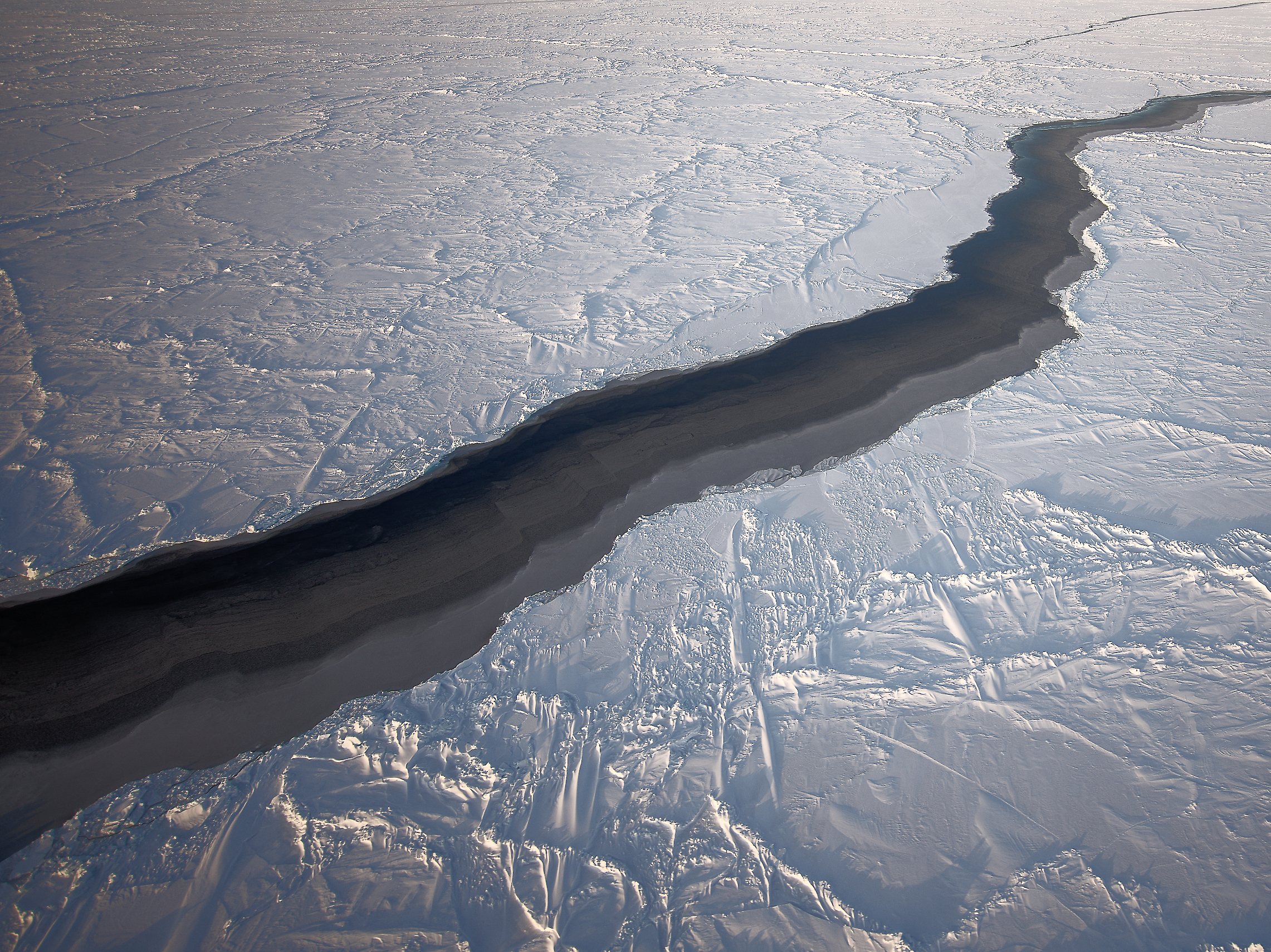
A substantial lead (large fracture) has opened in the Arctic iceshield near the North Pole, revealing the surface of the 4,000-meter deep Arctic Ocean. Leads naturally occur in the shifting Arctic ice, but their numbers have noticeably increased due to global warming.
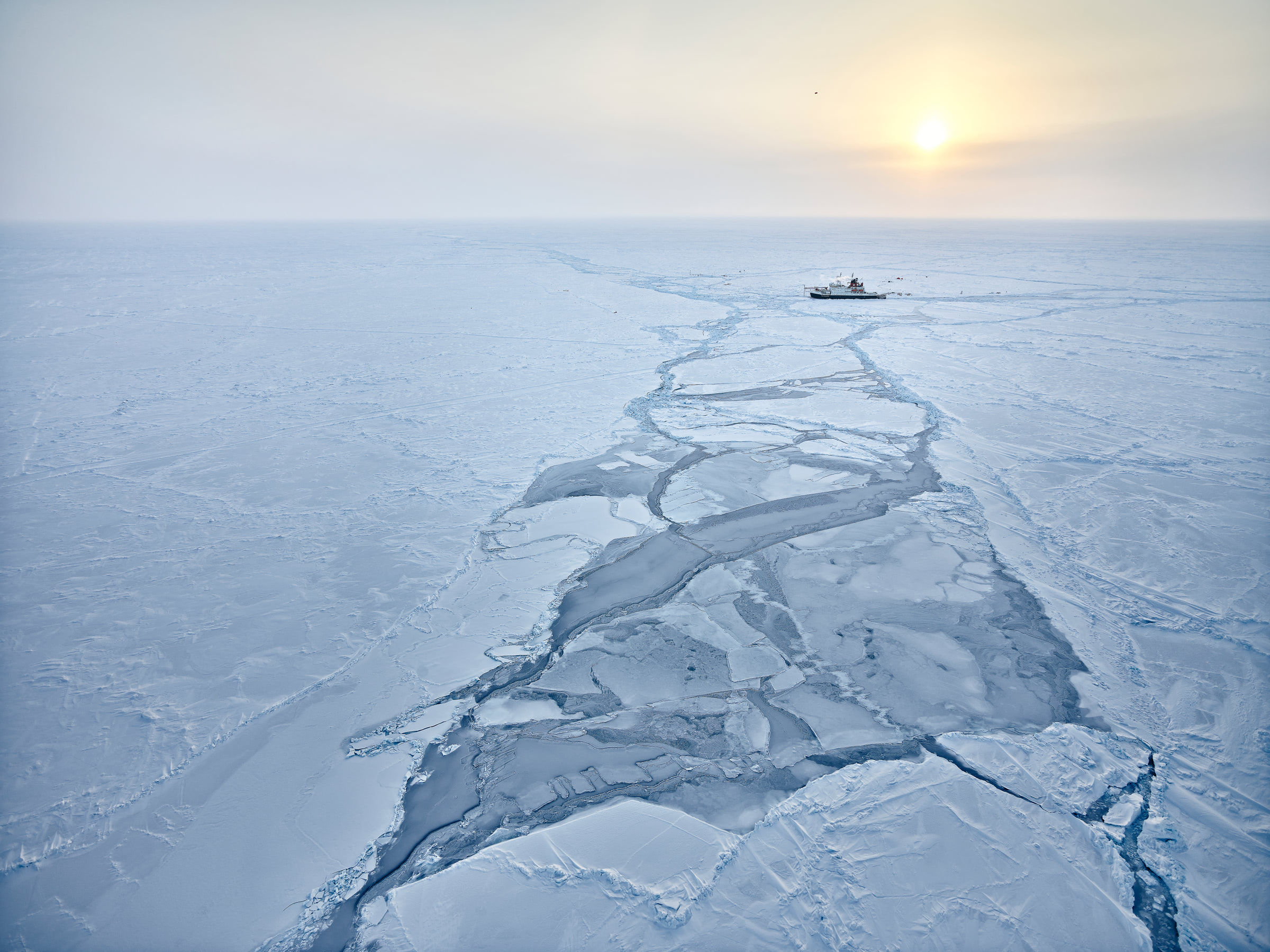
The German research icebreaker Polarstern drifts with the Arctic ice in March 2020, just as the rest of the world faced the first pandemic lockdown. Near the North Pole, the vessel was 1,000 kilometers away from any other point of civilization—even further than the International Space Station.

A Sea-ice physicist inspects an ice-coring drill head in the equipment storage room on board the Polarstern. Ice cores collected on the MOSAiC expedition will contain valuable data about climate-active trace gases and their movements within the Arctic ice and between the ice, ocean and atmosphere.

Sea-ice researchers and oceanographers install equipment to measure the Albedo Effect, which is the amount of sunlight reflected by the Arctic ice back into space. The white ice sheet reflects up to 85 percent of sunlight, thus preventing global warming.

Scientists from the Biogeochemistry and Ecosystem teams at work in their laboratory on board the Polarstern. Their instruments measure the levels of oxygen, methane, and other gases that affect the Arctic climate.
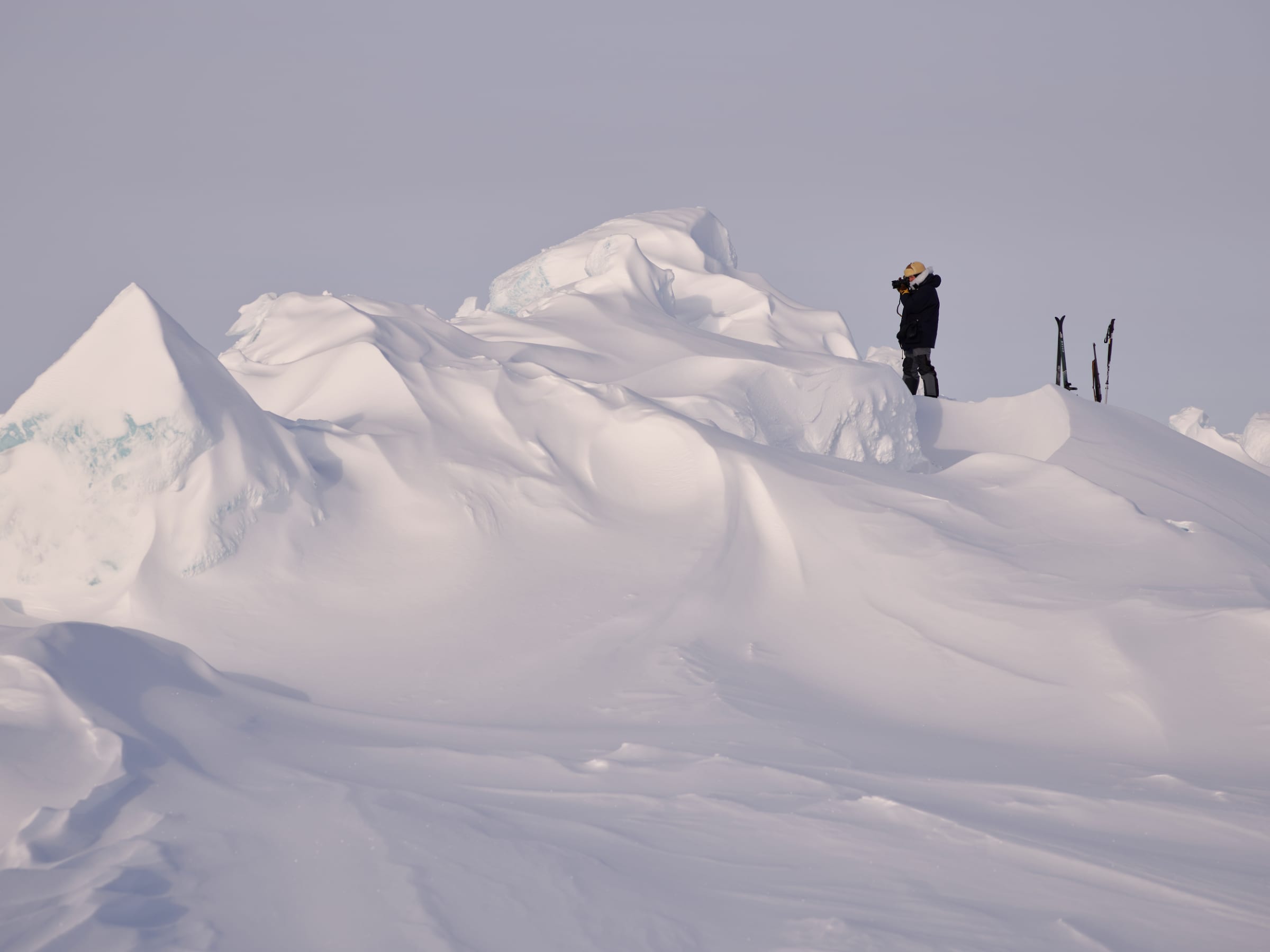
Professional scouts ensure the best possible safety for all expedition members on the ice at all times. They explore the surroundings of the research camp and establish the safest routes through the dangerous, constantly changing sea ice. With their years of experience, they are also able to spot polar bears early and thus protect all involved individuals.
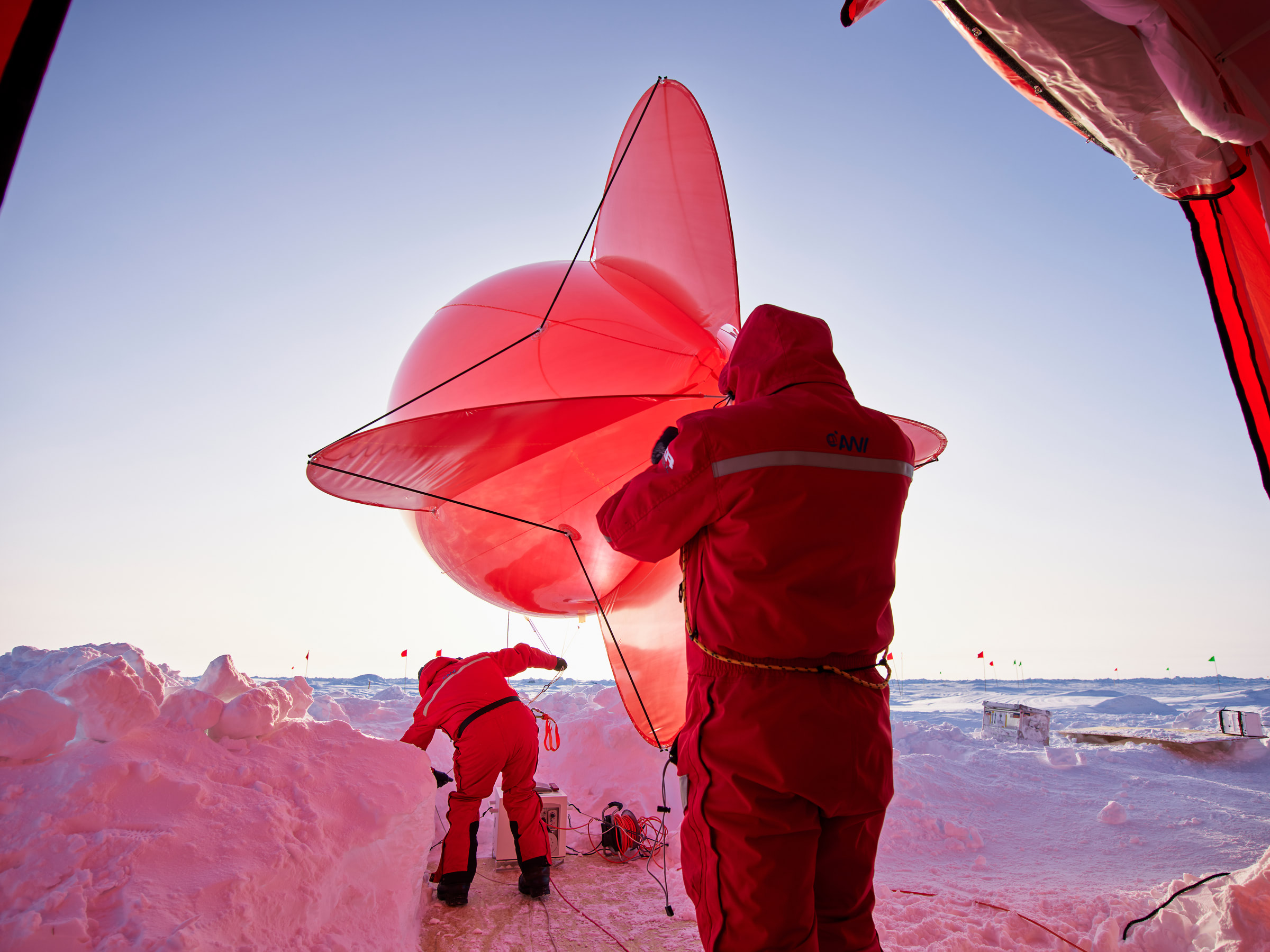
Atmospheric scientists prepare to launch an atmospheric balloon nicknamed Miss Piggy – a critical operation when wind speeds at ground level may not exceed 20 km/h. The balloon samples aerosols and detects tropospheric ozone in the atmosphere.
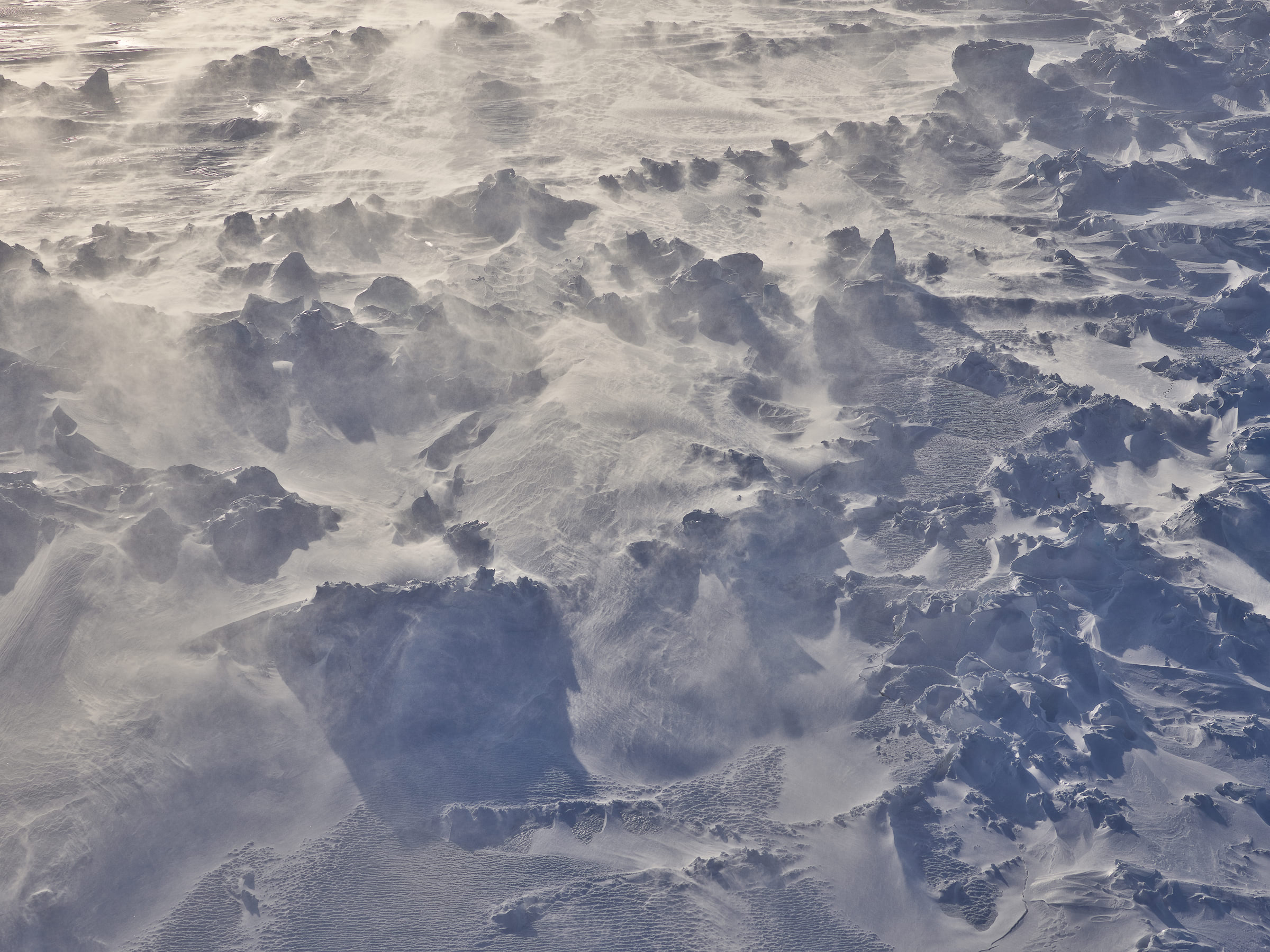
Ice ridges in an Arctic snow storm near the German research icebreaker Polarstern during the year-long MOSAiC expedition to the Arctic.